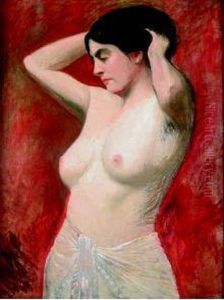Charles Lucien Balay Paintings
Charles Lucien Balay was a French Orientalist painter born in 1867 in Saint-Étienne, France, and died in 1938. His work primarily focused on scenes from North Africa, capturing the life, culture, and landscapes of the region with a particular emphasis on light and color. Balay was part of the Orientalist movement, which sought to depict aspects of Eastern cultures following the expansion of European empires and increased travel to these regions in the 19th and early 20th centuries.
Balay's interest in Orientalism was sparked by the allure of the exotic and the unknown, common themes among artists and writers of his time. He was particularly fascinated by Algeria and Morocco, countries he visited multiple times throughout his career. These travels provided him with a wealth of inspiration for his paintings, which were characterized by their vivid depictions of daily life, architecture, and landscapes under the unique light of the North African sun. His works were celebrated for their ability to capture the essence of the places and people he depicted, offering European audiences a glimpse into a world that was largely unfamiliar to them.
Despite being less well-known than some of his contemporaries in the Orientalist movement, such as Eugène Delacroix or Jean-Léon Gérôme, Balay's contributions to the genre were significant. He exhibited his works in several prominent venues, including the Salon de Paris, where his paintings were well-received by critics and the public alike. His attention to detail, use of color, and ability to convey the atmosphere of his subjects won him accolades and recognition among his peers.
Throughout his career, Balay remained committed to his artistic exploration of North Africa, contributing to the wider European understanding and appreciation of the region. His paintings not only serve as beautiful examples of Orientalist art but also as historical documents that offer insight into the cultural and social dynamics of North Africa at the turn of the 20th century. Charles Lucien Balay's legacy, though perhaps not as widely recognized as some of his peers, remains an important part of the Orientalist movement, illustrating the enduring fascination with the cultures and landscapes of the East.
